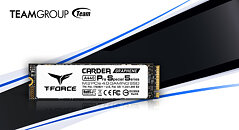
Peculiar Sony LinkBuds Leak, Appears to be Open Back
When it comes to headphones, Sony is not a company to shy away from trying new things and the leaked LinkBuds are unlike anything else currently in the market. What we're looking at seems to be a set of open back in-ear TWS earbuds, although it's highly unlikely that we'll see any form of noise cancelling support here. Sony did make something similar under its Xperia brand some years ago, although the Xperia Ear Duo XEA20 as they were called, weren't nearly as compact, but it's the only other open back in-ear type headphones we're aware of.
The LinkBuds, also known as the WF-L900 appear to be sitting entirely inside your ears and according to the leaked information, they lack any kind of physical buttons. This might not be a huge issue, as the LinkBuds are said to feature automatic volume control, based on the listening environment. They're supposedly built around Sony's V1 processor and are said to feature support for Sony's DSEE (Digital Sound Enhancement Engine). Although noise cancelling for the listener might be missing, AI noise suppression for voice is apparently present and is meant to be activated by touching the ear, rather than the earbuds. Other features should include support for voice assistants, Google Fast Pair and multi-pairing.
The LinkBuds, also known as the WF-L900 appear to be sitting entirely inside your ears and according to the leaked information, they lack any kind of physical buttons. This might not be a huge issue, as the LinkBuds are said to feature automatic volume control, based on the listening environment. They're supposedly built around Sony's V1 processor and are said to feature support for Sony's DSEE (Digital Sound Enhancement Engine). Although noise cancelling for the listener might be missing, AI noise suppression for voice is apparently present and is meant to be activated by touching the ear, rather than the earbuds. Other features should include support for voice assistants, Google Fast Pair and multi-pairing.
















































